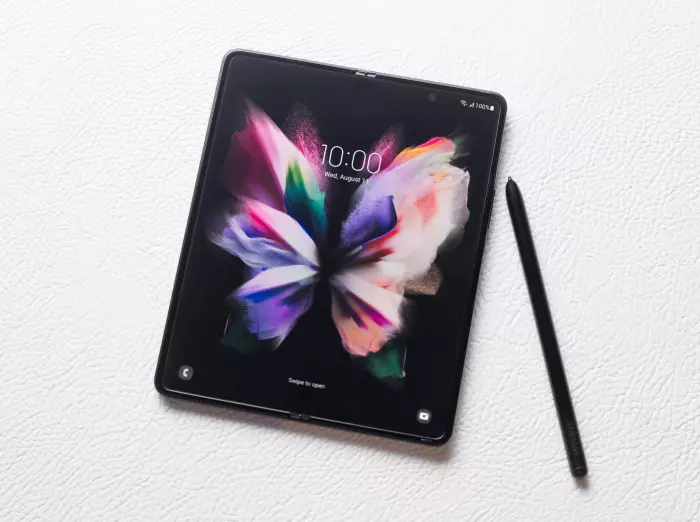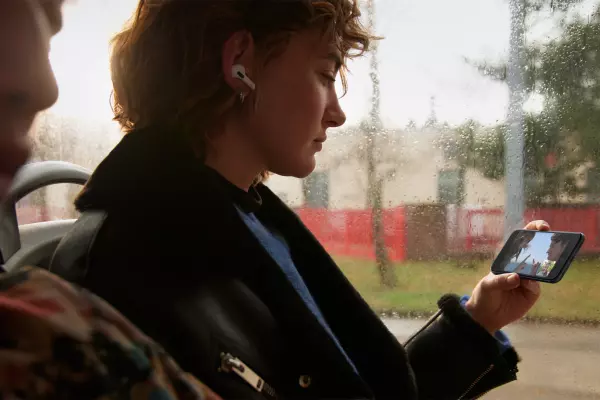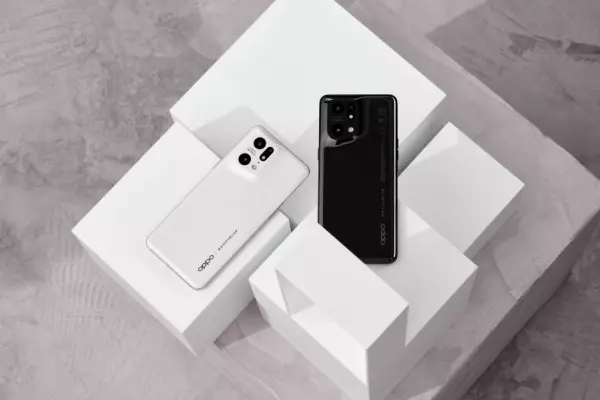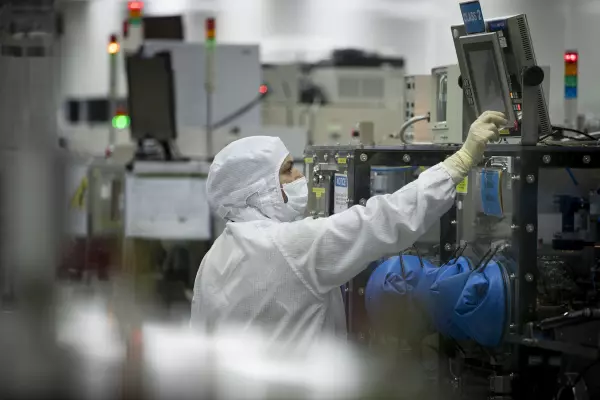It’s still amazing, even after two previous versions, that the Galaxy Z Fold 3 literally folds in half.
You might be asking why your phone needs to fold – the answer is that it does not, but it’s cool that it’s an option.
Samsung’s newest and most expensive mobile device isn’t quite a smartphone, and it isn’t quite a tablet, but it's sure as hell trying to convince you it can be both.
Smartphones have been generic slabs of glass for more than a decade, but Samsung has decided to lead the industry into a foldable future where consumers can choose a different form factor of device.
After two weeks of using the Z Fold 3 as my main phone, I'm certain this is not a choice everyone should make. Even if you can afford to drop $2,699 without much thought, approach with caution.
Unlike the Galaxy Z Flip 3, Samsung’s other new foldable phone that folds into a smaller size, the Z Fold 3 is a large chunky phone that unfolds to reveal a larger separate internal display.
The front display, when closed, is too skinny to type on like a regular smartphone – I constantly made typos.
Viewing social media apps on it is fine, but anything that isn’t designed to be an endless scroll looks bunched up, and some apps could not format correctly.
I also found typing on the inside screen awkward. Samsung’s stock software keyboard has an option to split in half – to be pushed nearer to each thumb – but it’s a steep learning curve, and I couldn’t type without looking at the letters.
Other downloadable keyboards like Google’s Gboard or Microsoft Swiftkey can be installed, as they can on every other Android phone, but when they're spread out in full size across the large display, it makes them hard to type on with two thumbs. You can resize them, but it doesn’t make the device less stubborn.
This is a long way of saying you will type a lot slower on the Z Fold 3 than on your current phone.
But then again, the Z Fold 3 isn’t about long text chats. It’s about having a tablet in your pocket, about owning the bleeding edge of consumer technology.
It’s about showing off, basically.
Portability at a premium
So, there is a steep learning curve if you are an all-day texter and emailer. But the engineering prowess on show was enough to keep me hooked.
The hardware is absolutely top-tier premium. The matte black glass on the back of my loaned unit feels great and doesn’t show fingerprints, while the hinge mechanism is tight and robust.
Like the flip phones of yore, you can satisfyingly open and close the Z Fold 3 with a magnetic thunk.
But given the odd dimensions and hefty 271-gram weight (an iPhone 12 is 164g), I recommend a case. I wasn’t able to try one but was constantly worried about dropping the phone or having it slide off the edge of the sofa. A case will add bulk, but peace of mind.
That weight is also noticeable when the phone is folded shut and you’re on a call. Believe it or not, some of us still use our phones as phones, and my arm got tired of holding the thing after 20 minutes or so.
Maybe I need to spend more time at the gym.
The earpiece is right at the very top edge, though, so you must angle the phone ever so slightly to get the best audio – another sign that this phone is not really designed to be a phone.
Impressively, the Z Fold 3 is IPX8 rated, which means it is water-resistant up to 1.5 metres for 30 minutes. It can survive a dunk in the bath or a rain shower, basically.
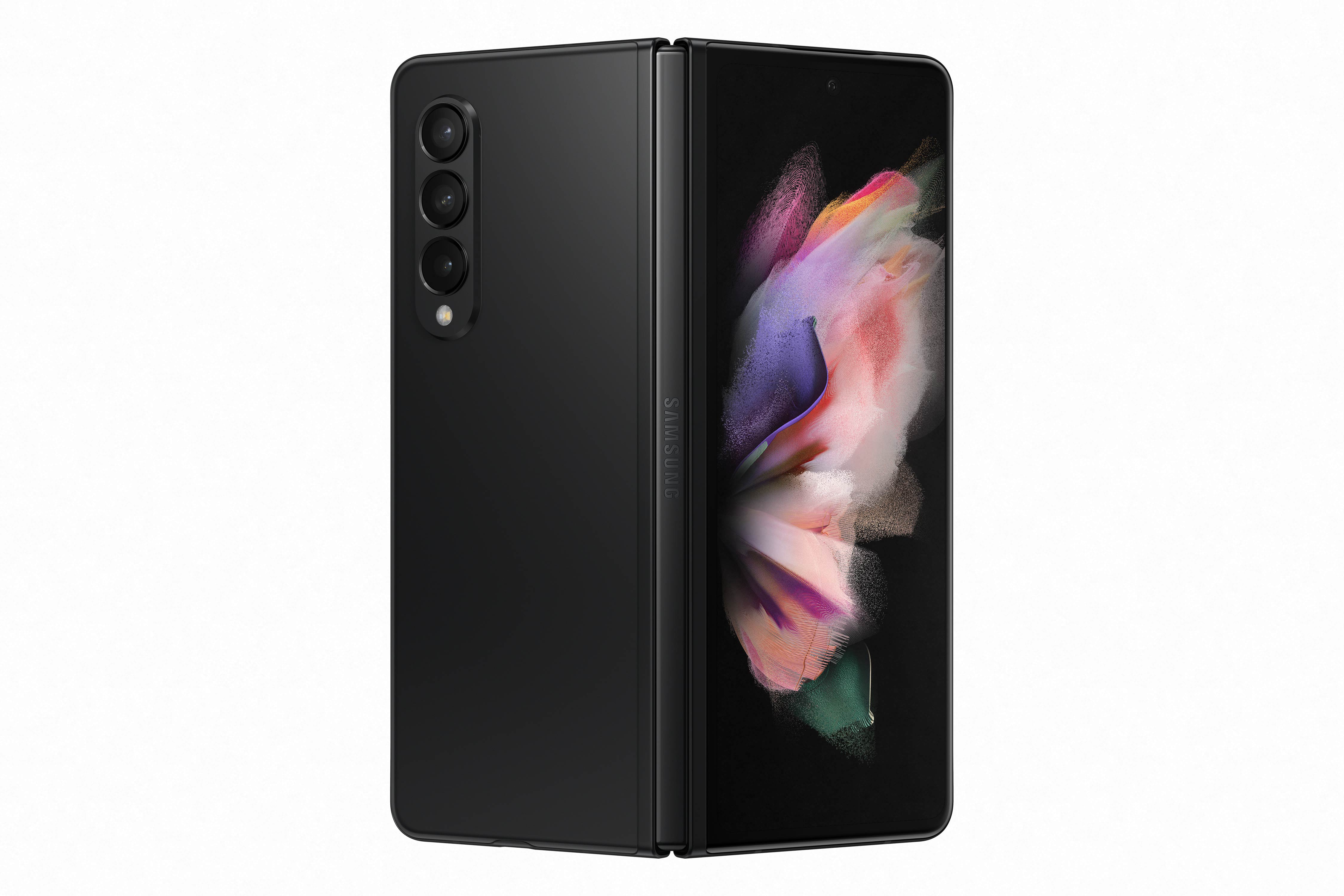 Is this the future of phones? (Image: Samsung)
Is this the future of phones? (Image: Samsung)
The ‘X’ in that rating means it’s not dust resistant, thanks to that moving hinge. Do not take it to the beach.
Samsung has improved the inside display’s outer coating so that it’s less tacky than the Z Fold 2’s. Indoors and looking head-on, the screen is very clear and bright and, like the outer display, can refresh at 120Hz to make animations, scrolling and video look much smoother.
But due to the nature of the plastics in the display that allow it to bend in the middle, it is quite reflective in bright sunlight, and the crease slap-bang in the centre of it can be seen in sunlight, or from most angles.
The crease didn’t bother me too much. It’s a trade-off for being able to fold the device closed and have it fit in your pocket.
But reading in the Kindle app outdoors one day showed just how many fingerprints it picks up.
The Fold makes for a great Kindle though, with its 7.6-inch inner display. Reading web pages and news apps is also great. You could conceivably use this instead of an iPad as your primary electronic reading tablet that happens to also fold down into a phone.
It is also compatible with Samsung’s S Pen stylus for writing and drawing, but I wasn't loaned one to test out.
The triple 12-megapixel cameras are excellent, with ultra-wide, main and telephoto lenses allowing for more creativity with shots. It's also 5G compatible.
Work it
I found the Z Fold 3 a solid business tool. The inner display has a not very good but passable selfie camera that is cleverly hidden by pixels when not in use, so you have an expansive canvas for Word docs, Zoom calls and spreadsheets.
There’s also excellent split-screen software that lets you run two apps side by side (three If you want, but it gets a bit cramped.)
I was able to be on a video call with one half of the screen and have either my email, notes, or any other compatible app open on the other half.
That’s Samsung’s vision.
But the reality is most people use their phones to text and scroll social media. This is where the Z Fold 3 stutters – sometimes literally. Despite 12GB of RAM, more than once I had to close Twitter and restart it when it brought the whole phone to a standstill.
There are other bugs in apps that haven’t been optimised to fit onto what is a nearly square screen, and Instagram displays by default with big black bars on either side of it.
Samsung has included some ‘Labs’ experimental features buried in the settings menu where you manually force apps like this to become full screen, among other tweaks.
Nice custom options, but not the sort of experience most consumers will want or realise they exist.
Despite the slick marketing, this is an enthusiast’s device, one to be tinkered with and potentially used as a secondary device rather than a primary phone. A luxury indeed.
This is unlike the Z Flip 3, which is far more like a phone that happens to fold, with fewer barriers to easy daily use, apart from its terrible battery life.
I found battery life on the Z Fold 3 much better, getting me through a day with about 20% left by bedtime. But this was in level four lockdown, so I would expect it would fare worse were I using it more off the Wi-Fi and on the go.
I love this sort of technology, so I would invest if I had nearly three grand spare.
For most people, I would recommend sitting this one out, unless you will use it as a second phone or are willing to slap your SIM card in it and get used to its vision of the future. I’m just not sure the future will turn out that way.


